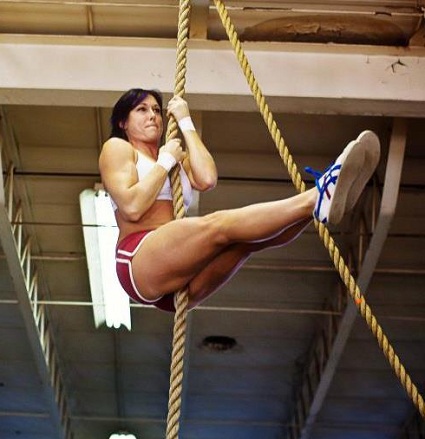It’s funny how CrossFit has such a staunch anti-bodybuilding sentiment, yet it’s participants clearly share a narcissistic vibe. Early on the workouts were short, intense, and effective and the high enthusiasm laid the foundation for how well CF has expanded. True athletes like my friend Eva Twardokens and Greg Amundson excelled and were highlighted, and everyone wanted to be like them. There was that element of “showing some skin”, but an argument could be made that it was for the sake of utility. For example, in this video, Amundson starts fully clothed and sheds the shirt mid-workout.
I’ve done a lot of CrossFit and high-intensity training in climates that are much harsher than California, and I can assure you that life is easier without a shirt on. But nowadays, fashion—whether it concerns clothing or the body—is the norm in CrossFit. And even wear accessories like luxury brand watches. However, for those needing a watch repairs service, contact an expert to assist you. Those who would like to wear stylish watches without breaking the bank may look for a luxury replica watch.
Let’s be clear: there’s nothing wrong with this.
I’d rather it be that way. Let’s be honest, we like seeing attractive people. Lots of people also like clothing fashion as it relates to CF. I know nothing of fashion, but I know this because I see, “Can’t wait to see what everyone is wearing in the CF Regionals comp this weekend!” on Facebook.
I, of course, have a bias in that I appreciate well built folk who are exceptionally strong, powerful, and athletic. It’s why this website exists. So when I see people fawning over a 170 pound guy’s quads, I’m not really impressed. And it’s not just because he’s 170 pounds (though it doesn’t help). It’s because he severely lacks a posterior chain — hamstrings, adductors (groin), and gluteals. This isn’t relegated to males, because I see it equally in females.
Most of the CF training progressions are anterior chain dominant. There’s the air squat, front squat, and overhead squat. Press, push-press, and push-jerk. Deadlift, sumo deadlift high-pull, and med-ball clean. All of the squats are anterior chain dominant. The way that the push-press/jerk is taught is anterior dominant (bend knees). Other than the deadlift, the SDHP and med-ball clean typically turn into anterior chain movements. In reality, the deadlift is supposed to be a posterior chain movement, yet it hardly ever is (especially in almost all CF environments). Whether it’s fatigue, going to heavy too soon, or bad coaching, lumbar flexion is overly common in all of lifting, but especially CF, and this results in slack, non-working hamstrings. You can read more of my thoughts on this topic in this Q&A post.
These teaching progressions aren’t necessarily bad, especially when compared to the lack of compound movements in the conventional fitness world, yet they don’t inherently build a posterior chain. Being an athlete requires a balance of musculature around the hips to achieve optimal performance and prevent injury. CrossFit is an activity that, for better or worse, allows trainees to ignore their muscular weaknesses and still “get by” or excel; you can have good CF performance and still have weak hamstrings.
It’s easy to see when someone has a weak posterior chain because their quads will be quite noticeable while the backs of their legs are not (you can see this in some weightlifters too). When they are in action, you’ll see them shift their mechanics to put an emphasis on using the quads and alleviating the tension on their hamstrings; it’s because their hamstrings are unable to withstand the load and tension due to lack of development.
When I work with CrossFitters I like them to peform two posterior chain movements each week, not counting deadlifts. My favorites to program are RDLs, banded good mornings, and glute-ham raises. Of course, regular good mornings could be used, and reverse hypers are very effective (though they are more focused on the lumbar/gluteal area than the hamstrings). Each movement can be done for 3 to 5 sets of 5 to 15 reps (depending on which exercise and the goal). Strengthening and building the posterior chain is the single most important thing athletes can do to improve their performance, and that’s infinitely more so for a CrossFitter.
As an example, my friend Shana Alverson is someone who has performed at a high level in CrossFit, is someone that has a pretty good posterior chain. At this point, she doesn’t do any direct accessory work, but she has a good balance of musculature (read: balance across anterior/posterior chains) that has yielded a 66kg snatch, 77 clean and jerk, 102kg squat, and 148kg deadlift at a 60kg body weight. It’s all paid off because she’s qualified for the CF Games for the 4th year in a row.
Train CrossFitters? Are one? Make sure the posterior chain gets proper attention.

